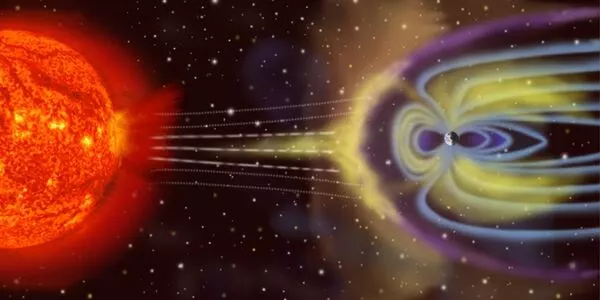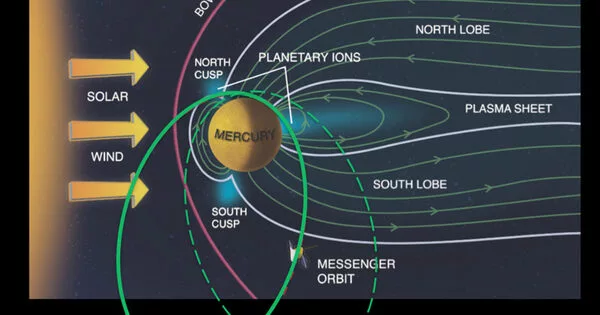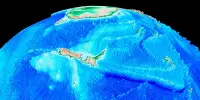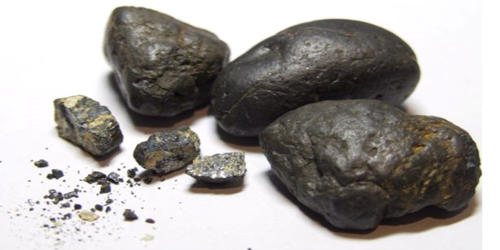Because Mercury has little atmosphere, it lacks weather such as storms, clouds, winds, and rain. Because it is so close to the Sun, its surface temperature can reach 801 degrees Fahrenheit during the day and -279 degrees Fahrenheit at night (because there is no atmosphere to trap the daytime heat).
An international team of scientists has demonstrated that Mercury, the smallest planet in our solar system, experiences geomagnetic storms similar to those experienced on Earth. Hui Zhang, a space physics professor at the University of Alaska Fairbanks Geophysical Institute, contributed to the research conducted by scientists from the United States, Canada, and China.
Their discovery, which is a first, answers the question of whether other planets, including those outside our solar system, can have geomagnetic storms regardless of the size of their magnetosphere or the presence of an ionosphere similar to Earth’s.
The first of these papers demonstrates that the planet has a ring current, which is a doughnut-shaped field of charged particles that flows laterally around the planet but not to the poles. The second shows that geomagnetic storms caused by the ring current exist.
The processes are very similar to what we see here on Earth. The main differences are the planet’s size and the fact that Mercury has a weak magnetic field and almost no atmosphere.
Hui Zhang
A geomagnetic storm is a significant disturbance in the magnetosphere of a planet caused by the transfer of energy from the solar wind. Such storms in the Earth’s magnetosphere cause the aurora and can interfere with radio communications.
The discovery of geomagnetic storms was published in the journal Science China Technological Sciences. The author is QiuGang Zong of Peking University’s Institute of Space Physics and Applied Technology and China’s Polar Research Institute.
That paper built on a finding published one day earlier that verified through data observation earlier suggestions that Mercury has a ring current. Earth also has a ring current. The ring current paper, published in Nature Communications, is authored by Jiutong Zhao, also of the Institute of Space Physics and Applied Technology at Peking University.
Seven of the 14 scientists involved worked on both papers.
“The processes are very similar to what we see here on Earth,” Zhang said of Mercury’s magnetic storms. “The main differences are the planet’s size and the fact that Mercury has a weak magnetic field and almost no atmosphere.”
Confirmation of geomagnetic storms on Mercury is the result of research made possible by a fortunate coincidence: a series of coronal mass ejections from the sun on April 8-18, 2015, and the end of NASA’s Messenger space probe, which launched in 2004 and crashed into the planet’s surface on April 30, 2015, near the end of its mission.

A coronal mass ejection (CME) is a cloud of charged particles ejected from the sun. That cloud contains the embedded magnetic field of the plasma. For scientists, the coronal mass ejection on April 14 proved decisive. Mercury’s ring current was compressed on the sun-facing side, increasing the current’s energy.
According to the second of the two papers, new analysis of data from Messenger, which had dropped closer to the planet, shows “the presence of a ring current intensification that is essential for triggering magnetic storms.”
“The sudden intensification of a ring current causes the main phase of a magnetic storm,” Zhang said. But this doesn’t mean Mercury has auroral displays like those on Earth.
Storms on Earth produce aurora displays when solar wind particles interact with atmospheric particles. Solar wind particles, on the other hand, do not encounter an atmosphere on Mercury. They instead reach the surface unimpeded and may thus be visible only through X-ray and gamma ray examination.
The findings of the two papers indicate that magnetic storms are “potentially a common feature of magnetized planets,” according to the second paper. “The Messenger results provide yet another fascinating insight into Mercury’s place in the evolution of the solar system following the discovery of its intrinsic planetary magnetic field,” the paper concludes.
Because they are invisible, tornadoes on Mercury are unlike anything you’ve ever seen. When a portion of the planet’s magnetic field twists up into a spiral, they form. This creates a link between the planet’s surface and outer space. Tornadoes are huge here, sometimes as wide as the planet itself. They are also transient, appearing and disappearing in a matter of minutes. Tornadoes form on Earth when two weather systems collide. Magnetic cyclones form on Mercury when powerful forces known as magnetic fields collide.
















